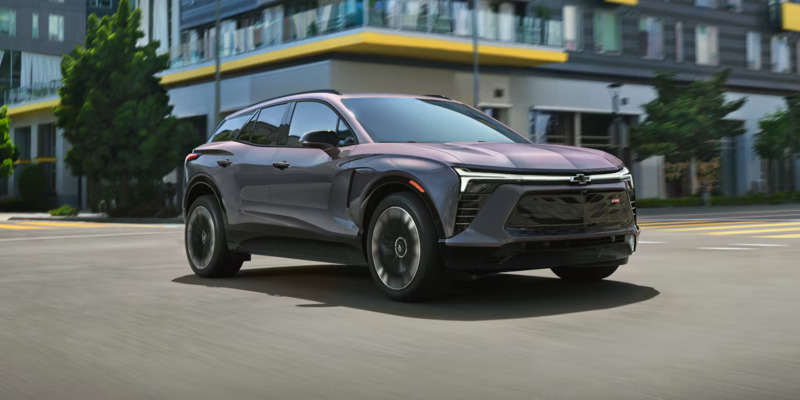Ultium vs Competitors: The GM Electric Battery Revolution
In the rapidly evolving world of electric vehicles (EVs), battery technology stands at the forefront of innovation. General Motors (GM) has made significant strides with its Ultium battery platform, aiming to revolutionize the EV landscape in Canada and beyond. Ultium Technology The GM battery platform represents a leap forward in EV battery design. At its … Continued
In the rapidly evolving world of electric vehicles (EVs), battery technology stands at the forefront of innovation. General Motors (GM) has made significant strides with its Ultium battery platform, aiming to revolutionize the EV landscape in Canada and beyond.

Ultium Technology
The GM battery platform represents a leap forward in EV battery design. At its core, this technology utilizes large-format, pouch-style cells that can be stacked vertically or horizontally within the battery pack. This flexibility allows for optimal energy storage and vehicle design across various models.
Key Features of Ultium Batteries:
- Modular Design: The modular architecture allows for scalability across different vehicle types, from compact cars to large SUVs and trucks.
- High Energy Density: The batteries offer energy densities of up to 200 Wh/kg, contributing to extended driving ranges.
- Fast Charging Capability: Ultium supports DC fast charging at rates up to 350 kW, allowing quick top-ups during long journeys.
- Reduced Cobalt Content: GM has significantly reduced the cobalt content in Ultium batteries, making them more sustainable and cost-effective.
- Wireless Battery Management: This innovative system reduces wiring within the battery by up to 90%, simplifying production and enabling remote updates.
Ultium-Powered Canadian Models
GM has introduced several Ultium-based models to the Canadian market, showcasing the versatility of the platform:
Chevrolet Equinox EV
The Equinox EV represents a push into the popular compact SUV segment. With an estimated range of up to 513 kilometres, it offers practicality for daily commutes and longer trips. The vehicle’s efficiency is impressive, with ratings of 2.0 Le/100 km in city driving and 2.4 Le/100 km on the highway.
GMC Hummer EV
While the Hummer EV may not be the most efficient electric vehicle, it demonstrates the power and capability of the Ultium platform. With up to 1,000 horsepower in its top trim, it offers unparalleled performance for an electric truck. Depending on the configuration, the Hummer EV boasts a range of over 500 kilometres.
Cadillac LYRIQ
The LYRIQ showcases Ultium technology in the luxury segment. With an estimated range of over 500 kilometres and a sleek design, it combines performance with premium features. The LYRIQ’s efficiency ratings are competitive, with approximately 2.2 Le/100 km combined driving.
Comparison: Ultium to Competitors
To understand how Ultium stacks up against the competition, let’s compare it with some key rivals in the Canadian EV market:
Tesla’s Battery Technology
Tesla remains a formidable competitor in the EV space, known for its long-range vehicles and extensive Supercharger network.
Comparison Points:
- Energy Density: Tesla’s latest cells offer similar energy densities, around 200-300 Wh/kg.
- Charging Speed: Tesla vehicles can charge at rates up to 250 kW, slightly lower than the Ultium 350 kW capability.
- Range: The Tesla Model 3 Long Range offers up to 576 kilometres, comparable to top Ultium-based models.
- Efficiency: Tesla vehicles are known for their efficiency, with the Model 3 achieving ratings as low as 1.8 Le/100 km in combined driving.
Hyundai-Kia’s E-GMP Platform
The Electric-Global Modular Platform (E-GMP) underpins several popular EVs from Hyundai and Kia.
Comparison Points:
- Voltage Architecture: E-GMP uses an 800V architecture similar to Ultium, allowing faster charging.
- Charging Speed: E-GMP supports charging rates up to 350 kW, matching the Ultium capabilities.
- Range: The Hyundai IONIQ 5 offers ranges up to 488 kilometres, slightly less than top Ultium models.
- Efficiency: E-GMP vehicles like the Kia EV6 achieve efficiency ratings around 2.1 Le/100 km in combined driving, comparable to Ultium-based models.
Volkswagen MEB Platform
Volkswagen’s Modular Electric Drive Matrix (MEB) is the foundation for various EVs across the Volkswagen Group brands.
Comparison Points:
- Scalability: MEB is designed to be scalable across different vehicle sizes and types.
- Charging Speed: MEB currently supports charging rates up to 125 kW, lower than the Ultium capabilities.
- Range: The Volkswagen ID.4 offers ranges up to 400 kilometres, less than many Ultium-based models.
- Efficiency: MEB-based vehicles achieve efficiency ratings around 2.3-2.5 Le/100 km in combined driving, slightly higher than some Ultium models.
The Ultium Advantages in the Canadian Market
The GM technology offers several advantages that make it well-suited for the Canadian EV landscape:
- Cold Weather Performance: These batteries perform well in cold climates, a crucial factor for Canadian drivers. The battery management system includes advanced thermal management to maintain optimal operating temperatures.
- Scalability for Various Vehicle Types: The modular nature of these batteries allows GM to offer a wide range of vehicles, from compact cars to full-size trucks, catering to diverse Canadian consumer preferences.
- Long Range Capabilities: With ranges exceeding 500 kilometres in some models, Ultium-powered vehicles address range anxiety concerns, particularly important for long-distance travel in Canada’s vast geography.
- Fast Charging Network Development: GM is investing in expanding the fast-charging infrastructure across Canada, leveraging the high-speed charging capabilities to enhance the EV ownership experience.
- Local Production: The GM commitment to producing batteries in North America could lead to potential cost benefits and increased adoption in the Canadian market.
Future Developments and Challenges
As GM continues to refine and expand its technology, several developments and challenges lie ahead:
Advancements in Battery Chemistry
GM is working on next-generation Ultium cells that promise higher energy densities and lower costs. These advancements could further extend driving ranges and make EVs more accessible to a broader range of consumers.
Expanding the Model Lineup
GM plans to introduce more Ultium-based models across its brands, including affordable options that could accelerate EV adoption in Canada. The upcoming Chevrolet Blazer EV and Silverado EV are examples of this expansion.
Infrastructure Development
While this innovative technology offers impressive charging speeds, the availability of high-power charging stations across Canada remains a challenge. The GM partnerships with charging network providers will be crucial in addressing this issue.
Competition and Innovation
As other automakers continue to innovate in battery technology, GM will need to maintain its competitive edge. The EV market is rapidly evolving, with new entrants and technologies emerging regularly.
Sustainability and Recycling
GM is focusing on improving the sustainability of batteries, including developing efficient recycling processes. This aspect will become increasingly important as more EVs enter the Canadian market.
Ultium Battery Technology: The Future of EVs
GM battery technology represents a significant step forward in the evolution of electric vehicles. Its modular design, high energy density, and fast-charging capabilities position it as a strong competitor in the Canadian EV market. While challenges remain, particularly in infrastructure development and keeping pace with rapid innovation, Ultium-powered vehicles offer compelling options for Canadian consumers looking to transition to electric mobility.
As the EV landscape continues to evolve, the GM commitment to advancing technology suggests a promising future for electric vehicles in Canada. With ongoing improvements in range, efficiency, and performance, Ultium-based models will play a crucial role in Canada’s transition to sustainable transportation.



